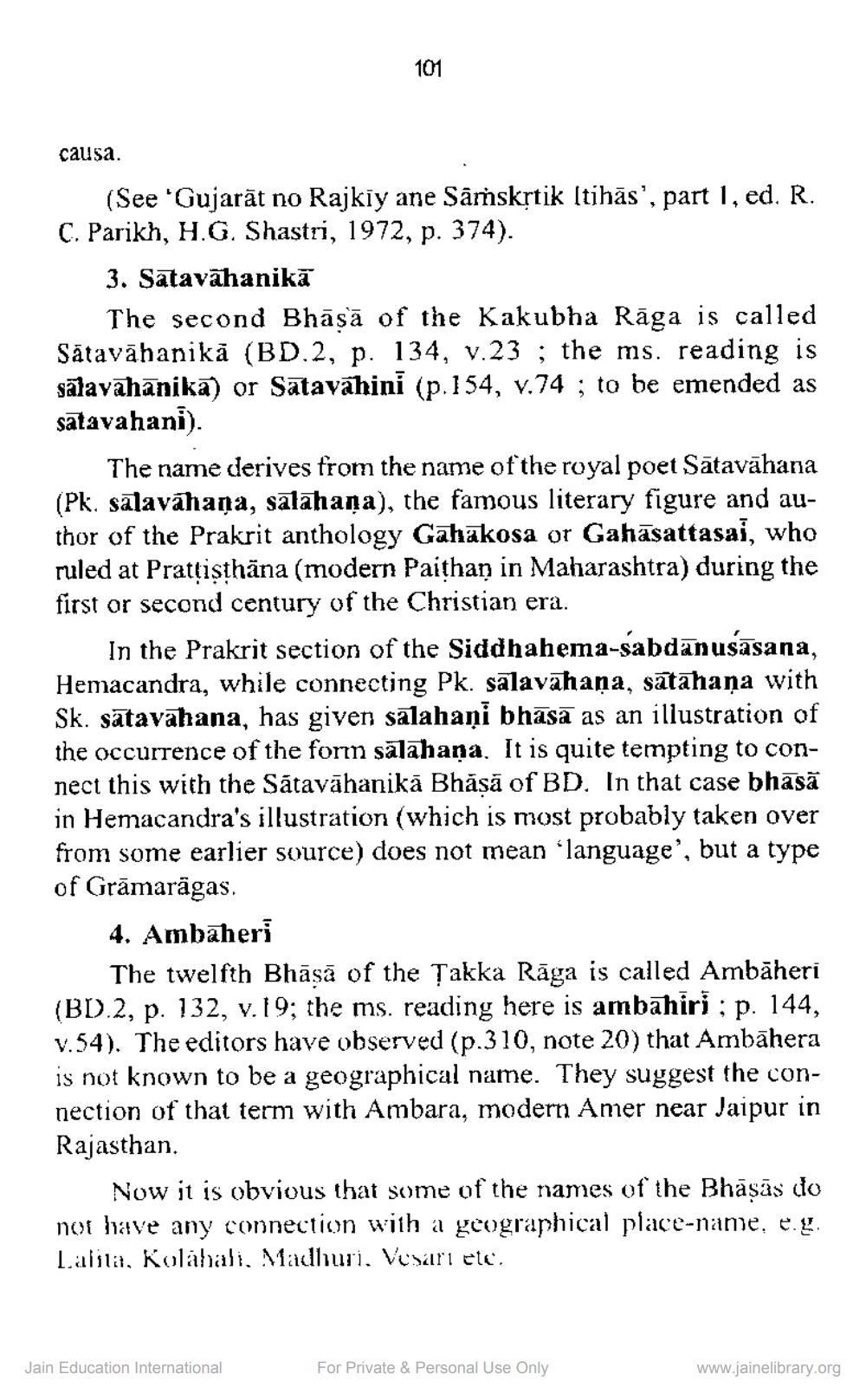Book Title: Some Sporadic Notes on Brhaddesi Author(s): H C Bhayani Publisher: ZZ_Anusandhan View full book textPage 2
________________ 101 causa. (See 'Gujarāt no Rajkiy ane Şarskrtik Itihās', part 1, ed. R. C. Parikh, H.G. Shastri, 1972, p. 374). 3. Satavāhanikā The second Bhāṣā of the Kakubha Rāga is called Sātavāhanikā (BD.2, p. 134, v.23 ; the ms. reading is sālavāhānika) or Satavahini (p.154, v.74 ; to be emended as satavahani). The name derives from the name of the royal poet Sātavāhana (Pk, sālaváhana, salāhana), the famous literary figure and author of the Prakrit anthology Gahakosa or Gahāsattasai, who ruled at Prattisthāna (modern Paithan in Maharashtra) during the first or second century of the Christian era. In the Prakrit section of the Siddhahema-sabdanusāsana, Hemacandra, while connecting Pk. salavahaņa, sātāhaņa with Sk. sātavāhana, has given sälahaņi bhāsā as an illustration of the occurrence of the form sälahana. It is quite tempting to connect this with the Sātavāhanikā Bhásă of BD. In that case bhāsā in Hemacandra's illustration (which is most probably taken over from some earlier source) does not mean language', but a type of Grāmarägas. 4. Ambāheri The twelfth Bhāsā of the Takka Rāga is called Ambāheri (BD.2, p. 132, v. 19; the ms. reading here is ambahiri ; p. 144, v.54). The editors have observed (p.310, note 20) that Ambāhera is not known to be a geographical name. They suggest the connection of that term with Ambara, modern Amer near Jaipur in Rajasthan. Now it is obvious that some of the names of the Bhāṣās do not brave any connection with a geographical place-name, e.g. Lalitat, Kolähali. Madhuri. Vesari ete, Jain Education International For Private & Personal Use Only www.jainelibrary.orgPage Navigation
1 2 3 4 5
